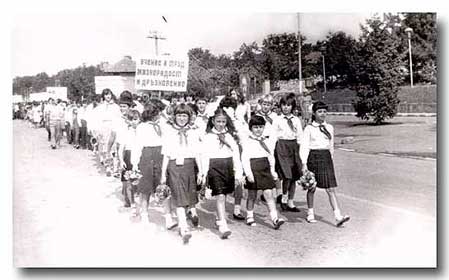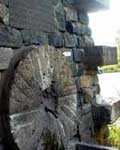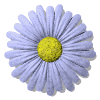|
Prehistory
The village
of Koprivets has an ancient history.
The earliest traces of
the life there date back to the Early Neolithic, about 7000
years B.C.
Several prehistoric habitations and tombs,
situated on the territory of the present cemetery and 300 meters
to the south-east from there, in the locality called Yůjeka,
were discovered in this area.
The excavations were carried
out at the begining of the 90s by the archaeologists at the
Historical Museum of Rousse.
In this area were discovered
amfors, vessels fragments, bricks, finger prints etc.
The
ceramic complex, found in Koprivets, connected with the wite
painted decoration is a phenomen earlier than 6000 B.C., mean
the archaeologists.
This is to be the earliest known
Neolithic presence in Bulgaria, was popularized Dr. Ivan Vajsov
in the article “Early Monochrome Neolithic in Bulgaria”.
More
...
 Ivan
Vajsov, Early
Monochrome Neolithic in Bulgaria,
Ivan
Vajsov, Early
Monochrome Neolithic in Bulgaria,
INTERNATIONAL
INSTITUTE OF
ANTHROPOLOGY
http://www.ff.uni-lj.si/arheologija/neolitik/seminars/a9.html#iva
 NEOLITHIC
AND ENEOLITHIC CULTURES ON
NEOLITHIC
AND ENEOLITHIC CULTURES ON
THE TERRITORY OF
BULGARIA
http://archweb-bg.cilea.it/neol.htm

The
Thracian
Several
mounds, found in Koprivets, in the forest locality called
Chŕnadjika and in the locality called Chengenč
orman, near the road driving to the village of Bŕniska,
testify to the past existence of a Thracian
settlement.
Thracians of the tribe Getae settled in this part
of Danubian valley, and the ancient Greek Herodotus described
them as the biggest and the most courageous tribe of Trace.

On
the map : The boundary between
the prefecture
Dace
and
Thrace
In the
midle of 5th century B.C. the lands of the Getae were
included in the Odrysian kingdom, the first Thracian
kingdom.
One of the most interesting tomb, found near
Koprivets, is dated the 5th-4th centuries
BC.
It was discovered in the locality of Kujů Karshi
and apparently it was made for a Thracian nobleman, probably the
proprietor of the village.
The bural mound contains exquisite
patterns of ancient thracian fine arts, as gold neck laces and
jewellery, clay and copper crockery with high scientific and
historic value.
Some items could be seen in the collections
of the Historical Museum of the town of Rousse.
Roman
times
Imperial
coins of the Roman emperors Trajan (98- 117) and Caracalla (211-
217), and other coins from the island of Tassos, pottery from
the Roman and Early Byzantine periods were found on the
territory of Koprivets.
The period of a great growth of the
Danubian Valley and a prosperity of all Balkan Peninsula started
when Thrace became a Roman province, governed by the emperor
Trajan.
Important
cities like Filipopolis (Plovdiv), Augusta Traiana (Stara
Zagora), Serdica (Sofia), Naisus (Nish), Pautalya (Kyustendil),
Durostorum (Silistra), Marcianopolis (Devnya), Nikopolis ad
Istrum (near the village of Nikyup) etc. grew in the 2nd –3th
centuries A.D.
An
ancient road, wich linked the roman town of Nikopolis ad Istrum
with the roman town of Marcionopolis (the Northeastern Bulgaria
with Black Sea coast) crossed the village.
There, on the
higest hill near the road, a place with strategic significance,
was built the fortification of Kalč Burůn (or
Zemin Kale- “the serpent's place”), existed between
6th
and 4th
centuries B.C., but it was used also at a later epochs.
40
broinze and gold coins from 5th
century A.D. and amphora fragments from 5th-6th
centuries A.D. were discovered there.
The
ruins of Kalč Burůn are located at 4 km on the
east from the present village, at 150 m on the north from the
road, driving to the town of Popovo (direction Varna).

The
hill where are situated
the ruins of Kalč Burun
It
was explored by Czech Karel Skorpil, together with the forts in
the basin of the Roussenski Lom (Kарел
Шкорпил , “Опис
на старините
по течението
на Русенски
Лом”, София,
1914).
In the 6th
-7th
centuries A.D. the South Slavs come to this region and
assimilated its ancient inhabitants.
The
Ottoman rule
A
legend says that the village was a large settlement with a big
monastery, burnt down from the enraged turkish troops during the
Ottoman invasion.
The village of Koprivets is first mentioned
in a turkish document from 1483 by the name “Kopriveche of
the province of Shoumen”.
It says that the settlement
numbered 3 houses and the personal tax was 166 ahchč.
In
an other document from 15th century it was called
“village Kopriviche from nakhia Shumnů with a
turkish proprietor Timurkhan”.
The domestification of
hawks for the sultan court was a duty of the population.
In
the 18th century Bulgarian population from the Balkan
area (around the town of Elena and from the town of Gabrovo)
came in large groups.
Koprivets grew as a result of the
migration processes towards the plane.
During the Ottoman
rule many Turkish families lived there. In these time the
population was 1800 people: 283 houses, 87 of them was
Bulgarians.
Before the National liberation in 1878 the Turks
started to sell their houses to the Bulgarians. Up to end of the
20s in the village remained only few Turkish families.
The
agriculture and the stock breeding were developed.
In the
village was a pantile factory.
The school “Neofit
Rilsky” was founded in 1860 and the first teacher was
Dŕskal Sčiu.
The church was built in 1854-1856.

The
National liberation
The Russian
liberating troops entered the village on June 1877.
A mounth
later, in the former house of the Turkish administrator Mehmed
Bey in neighbour town of Byala was situated the headqarter of
the Russian emperor.
The decisive battles for the freedom
were in September 1877.
All men of the village fought against
the Ottomans, together with a Russian soldiers.


The
fountain near the monument in honour of fallen heroes of
the
World War II, and the motel “Liůlatsite” are
situated
at 4 km from the village, on the road to the town
of Popovo.
The
population today is 1175 people.
|







